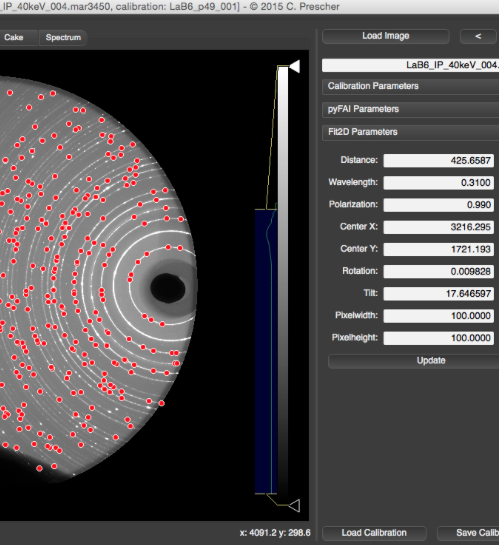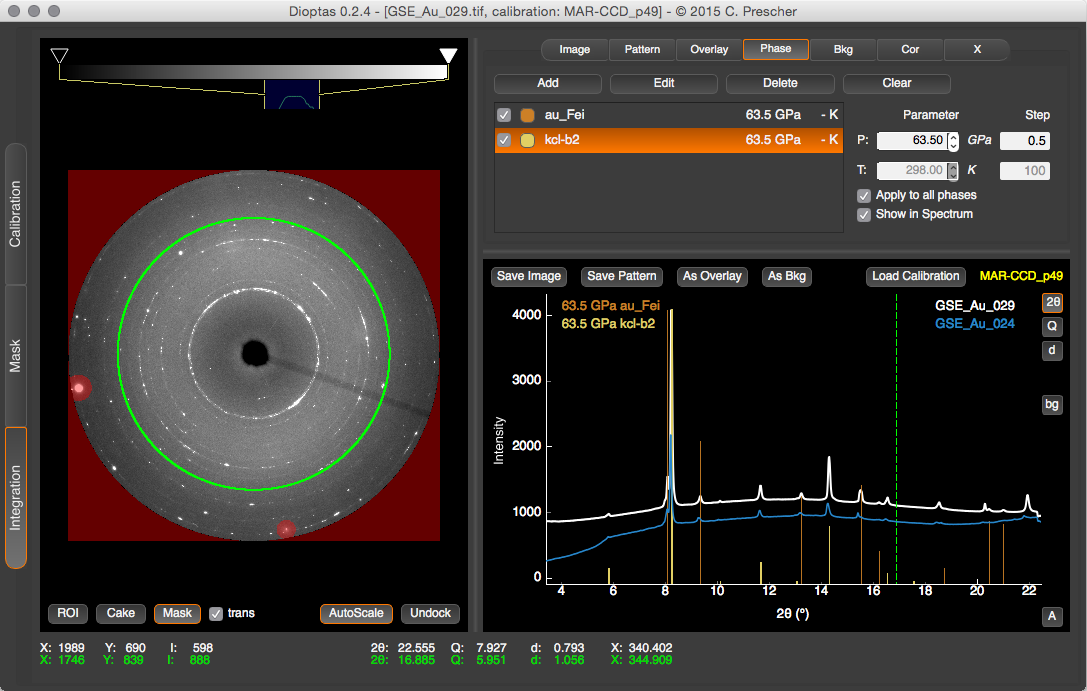| Overview |
| Dioptas is a Python-based program for on-the-fly data processing and exploration of two-dimensional X-ray diffraction area detector data, specifically designed for the large amount of data collected at XRD beamlines at synchrotrons. Its fast data reduction algorithm and graphical data exploration capabilities make it ideal for online data processing during XRD experiments and batch post-processing of large numbers of images. |
| Distribution & Impact |
|
Dioptas is mainly distributed via an open- source repository at https://github.com/Dioptas/Dioptas. However, since some of the required packages can be hard to install on some operating systems by non-expert end-users, we also provide executable packages via email request or via download from clemensprescher.com. Dioptas is cross-platform compatible and has been tested on Windows 7, Windows 8, Mac OS X and Linux Debian systems. |
| Funding Source |
|
This work was partially performed at GeoSoilEnviroCARS (Sector 13), Advanced Photon Source (APS), Argonne National Laboratory. GeoSoilEnviroCARS is supported by the National Science Foundation – Earth Sciences (EAR-1128799) and Department of Energy – GeoSciences (DE-FG02-94ER14466). This research used resources of the Advanced Photon Source, a US Department of Energy (DOE) Office of Science User Facility operated for the DOE Office of Science by Argonne National Laboratory under Contract No. DE-AC02-06CH11357. |
| Please cite |
| Future Development Work |
|
The Dioptas features as described here are just a current snapshot of the development process. We plan to further develop Dioptas to be a fully fledged analysis program of X-ray diffraction experiments. While it is now mainly used for the integration process and the integrated spectra are then analyzed with other analysis software, we plan to include extraction of pair distribution functions, peak fitting and structure refinement in the future. |
| Details |
|
Dioptas is written with interactivity and speed in mind while still being as versatile as possible. It employs an algorithm for calibration of any possible detector geometry, features easy-to-use masking tools, and offers very fast data exploration and phase analysis capabilities. The tunable calibration procedure enables the calibration of even the most complex geometries, including very large detector tilts, the primary beam being outside of the image and very spotty diffraction pattern of the calibrant. The main part of the software is the opportunity to interactively explore the 2d image and integrated pattern at the same time. The very fast integration algorithm (around 0.1s for an 2048px X 2048px image), a reliable tunable automatic background subtraction algorithm and the possibility to display phase lines make it a viable tool for realtime processing online at the beamline. Thus, enabling very fast decision making during the course of the experiment. |


